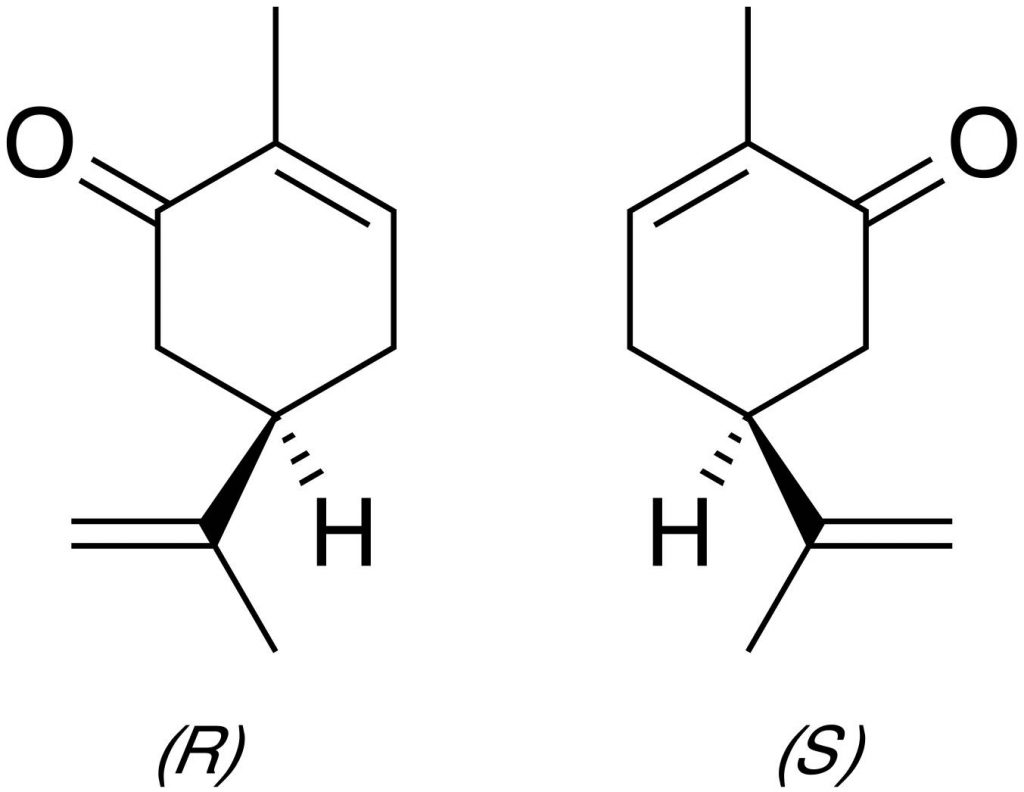 Carvone is a secondary metabolite produced by a number of plants. Carvone belongs to the terpenoid group of phytochemicals. Terpenoids are molecules consisting of linked isoprene units, and in plants include monoterpenes, diterpenes, and sesquiterpenes. Carvone falls into the category of a monoterpene and is found in the essential oil of many plants.. For example Aloysia polystachya produces significant amounts of carvone in its essential oils. Spearmint (Mentha spicata) essential oil also contains significant amounts of carvone. Carvone has some interesting pharmacological properties in animals, and may have particular central nervous system effects. For example, administration of carvone to mice causes sedation in the animals, and carvone has been shown to have anticonvulsant, antioxidant, antinociceptive, anti-inflammatory, antimania and anxiolytic activity in mice and other animals. The presence of carvone and other terpenoids may explain the mood altering effects of many plants.
Carvone is a secondary metabolite produced by a number of plants. Carvone belongs to the terpenoid group of phytochemicals. Terpenoids are molecules consisting of linked isoprene units, and in plants include monoterpenes, diterpenes, and sesquiterpenes. Carvone falls into the category of a monoterpene and is found in the essential oil of many plants.. For example Aloysia polystachya produces significant amounts of carvone in its essential oils. Spearmint (Mentha spicata) essential oil also contains significant amounts of carvone. Carvone has some interesting pharmacological properties in animals, and may have particular central nervous system effects. For example, administration of carvone to mice causes sedation in the animals, and carvone has been shown to have anticonvulsant, antioxidant, antinociceptive, anti-inflammatory, antimania and anxiolytic activity in mice and other animals. The presence of carvone and other terpenoids may explain the mood altering effects of many plants.

Carvone is constituent of a number of plants that show anxiolytic effects including Lippia alba (pitona), Mentha spicata (spearmint) and Aloysia polystachya (beebrush). The ability of carvone to alter central nervous system activity may be due to its ability to modify voltage-gated sodium channels in the brains of animals and humans. In this regard, studies suggest that carvone can act on the GABA receptor and in this way may affect the electrical excitability of the central nervous system. Image shows the structure of Carvone, with both levo and dextro forms shown. Image from: By User:Walkermaderivative work: user:Karlhahn-Carvone.png, Public Domain, https:// commons. wikimedia.org/ w/ index.php? curid=8634902.
Eat Well, Stay Healthy, Protect Yourself
RdB
